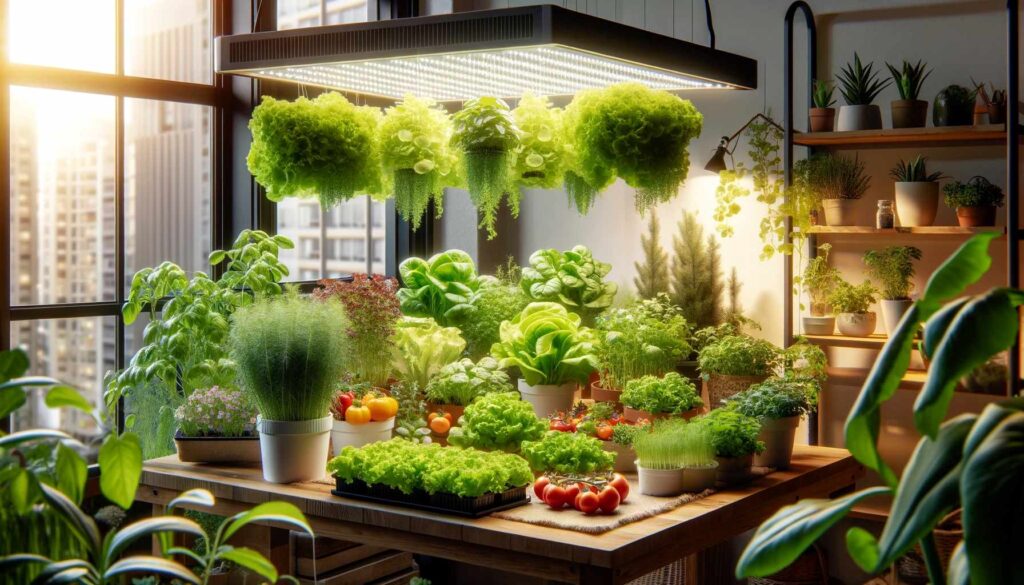This post contains affiliate links.
A Complete Guide
Urban living doesn’t have to mean giving up on the dream of having your own garden. Even in the smallest apartment, you can grow a variety of vegetables, herbs, and edible plants. This guide will walk you through everything you need to know to start and maintain a thriving vegetable garden in your apartment, turning your urban space into a green oasis.
Understanding the Basics

Lighting: Most vegetables require 6 to 8 hours of sunlight daily. South-facing windows are ideal, but if your apartment lacks natural light, consider investing in grow lights. LED or fluorescent grow lights can provide the full spectrum of light that plants need to photosynthesize.
Space: Evaluate how much space you can dedicate to your garden. Windowsills, balconies, and even vertical wall spaces can be perfect spots for planters and pots. Use shelves to create more room and consider hanging baskets for herbs.
Containers: Almost any container can be repurposed for planting as long as it has drainage holes. You can buy pots or make your own from items around the house. Remember, the size of the container should match the root requirements of the plants you choose.
Choosing Your Plants
Select vegetables that are known to thrive in container gardens. Leafy greens (like spinach and lettuce), herbs (such as basil and mint), and root vegetables (like carrots and radishes) are excellent choices for beginners. Tomatoes, peppers, and strawberries can also do well with the right care.
Soil and Fertilization

Opt for high-quality potting mix over garden soil, which can contain pests and diseases. Potting mix is designed to hold moisture and provide the drainage that container plants need. Regular fertilization is crucial since potted plants can exhaust their soil nutrients quickly. Use organic fertilizers or make your own compost to feed your plants.
Watering and Maintenance
Over-watering is a common mistake in container gardening. Ensure your containers have good drainage and water your plants when the top inch of soil feels dry. Be mindful of the humidity levels in your apartment, as indoor air can be dry, especially in winter. Misting your plants can help increase humidity.
Pest Management
Pests can be a challenge, even indoors. Keep an eye out for signs of infestation and address any issues promptly. Neem oil, insecticidal soaps, and manual removal are effective, non-toxic methods for dealing with pests.

Harvesting
The joy of apartment gardening comes full circle when it’s time to harvest. Pick your vegetables when they’re ripe to encourage further production. Regular harvesting keeps plants productive and can extend the growing season of many vegetables.
Conclusion
Vegetable gardening in an apartment is not only possible but also incredibly rewarding. It brings the joy of growing your own food into the urban environment, making it accessible for everyone. With a little creativity, patience, and care, you can transform your apartment into a lush, productive garden space. Whether you’re a seasoned gardener or a complete novice, now is the perfect time to start your vegetable gardening journey. Happy gardening!
This post contains affiliate links.

